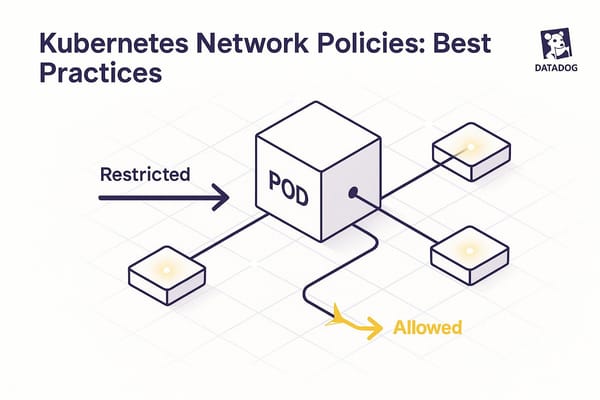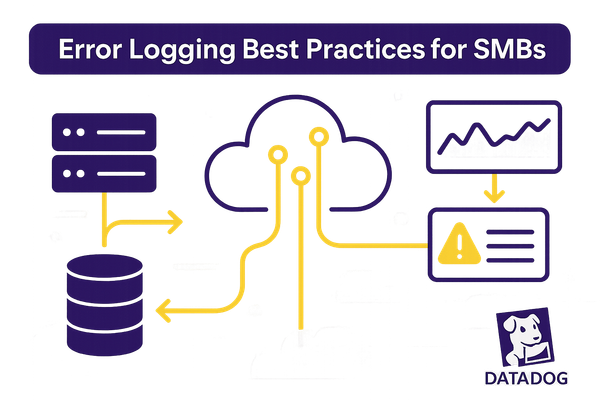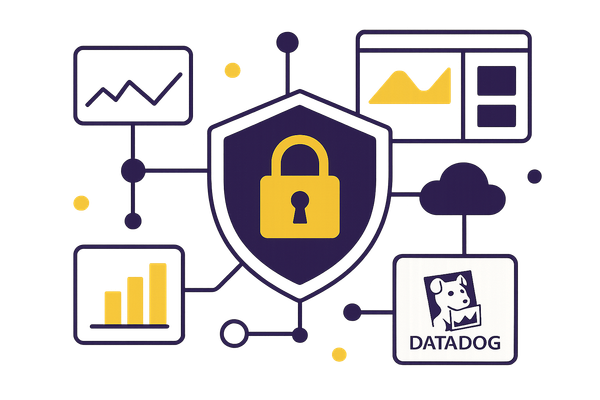Datadog Agent YAML Configuration Basics
Learn how to configure the Datadog Agent using YAML for effective monitoring, including best practices and advanced techniques.
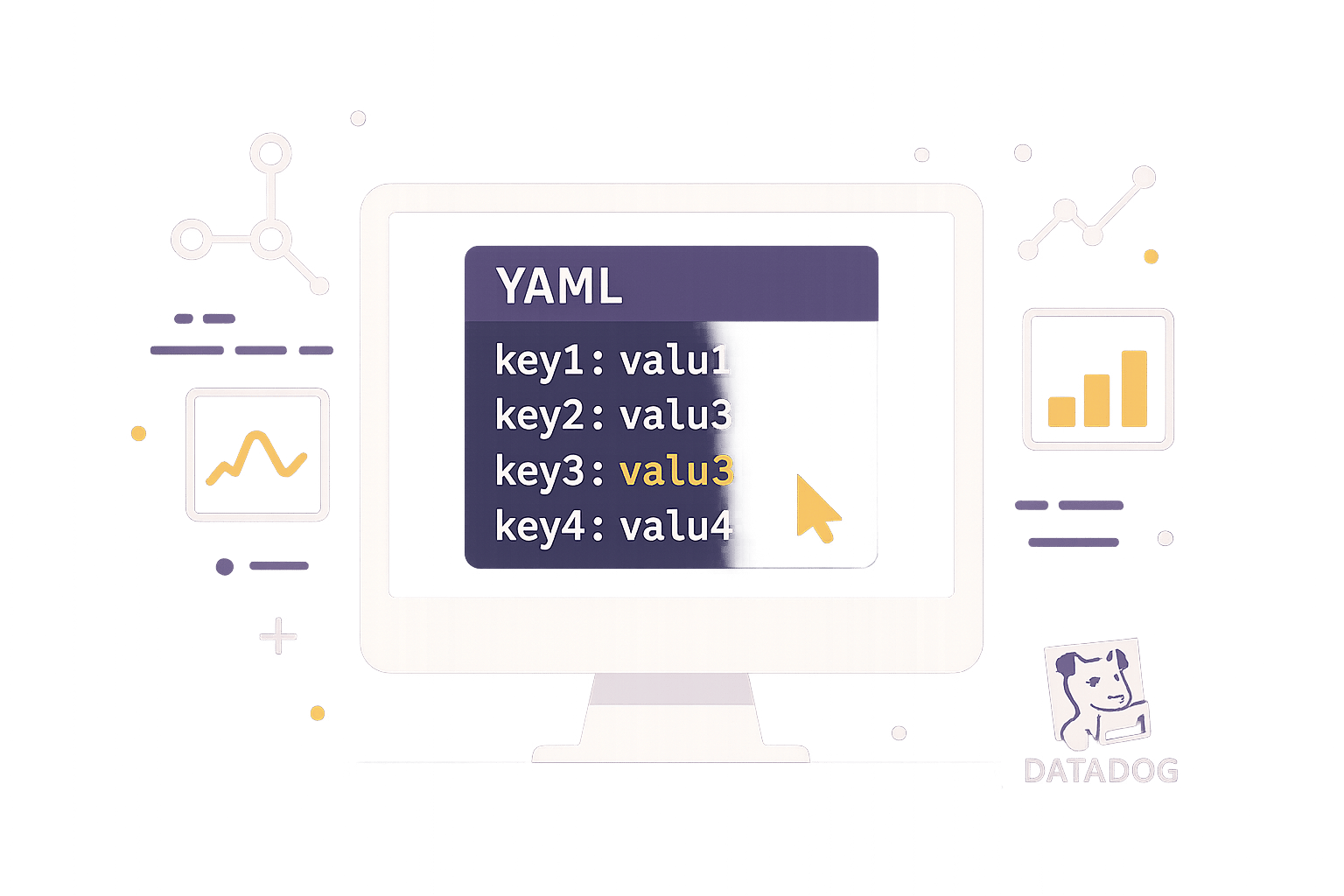
Datadog Agent YAML configuration is your key to efficient system monitoring. Here's what you need to know:
- What It Is: YAML files let you customize the Datadog Agent to monitor metrics, process data, and send it where needed.
- Why It Matters: YAML's clean, readable structure makes setup and troubleshooting easy - perfect for small to medium-sized teams.
- Key Features:
- Main Configurations: Use
datadog.yamlfor core settings like API keys, log collection, and performance tweaks. - Integrations: Manage specific integrations (e.g., PostgreSQL) in modular files within
conf.d. - Dynamic Flexibility: Combine YAML with environment variables for secure and adaptable setups.
- Main Configurations: Use
- Best Practices:
- Validate configurations with
datadog-agent configcheck. - Use tags to organize and filter data efficiently.
- Simplify setups with YAML anchors, aliases, and multi-environment structures.
- Validate configurations with
Quick Example:
To enable log collection, your datadog.yaml might look like this:
api_key: "<YOUR_API_KEY>"
logs_enabled: true
logs:
- type: file
path: /var/log/syslog
source: syslog
service: system-logs
For SMBs, YAML's simplicity and modularity make scaling your monitoring efforts seamless. Ready to dive deeper? Let’s explore how to fine-tune your configurations step-by-step.
Datadog Installing and Configuring Agent in Linux and windows
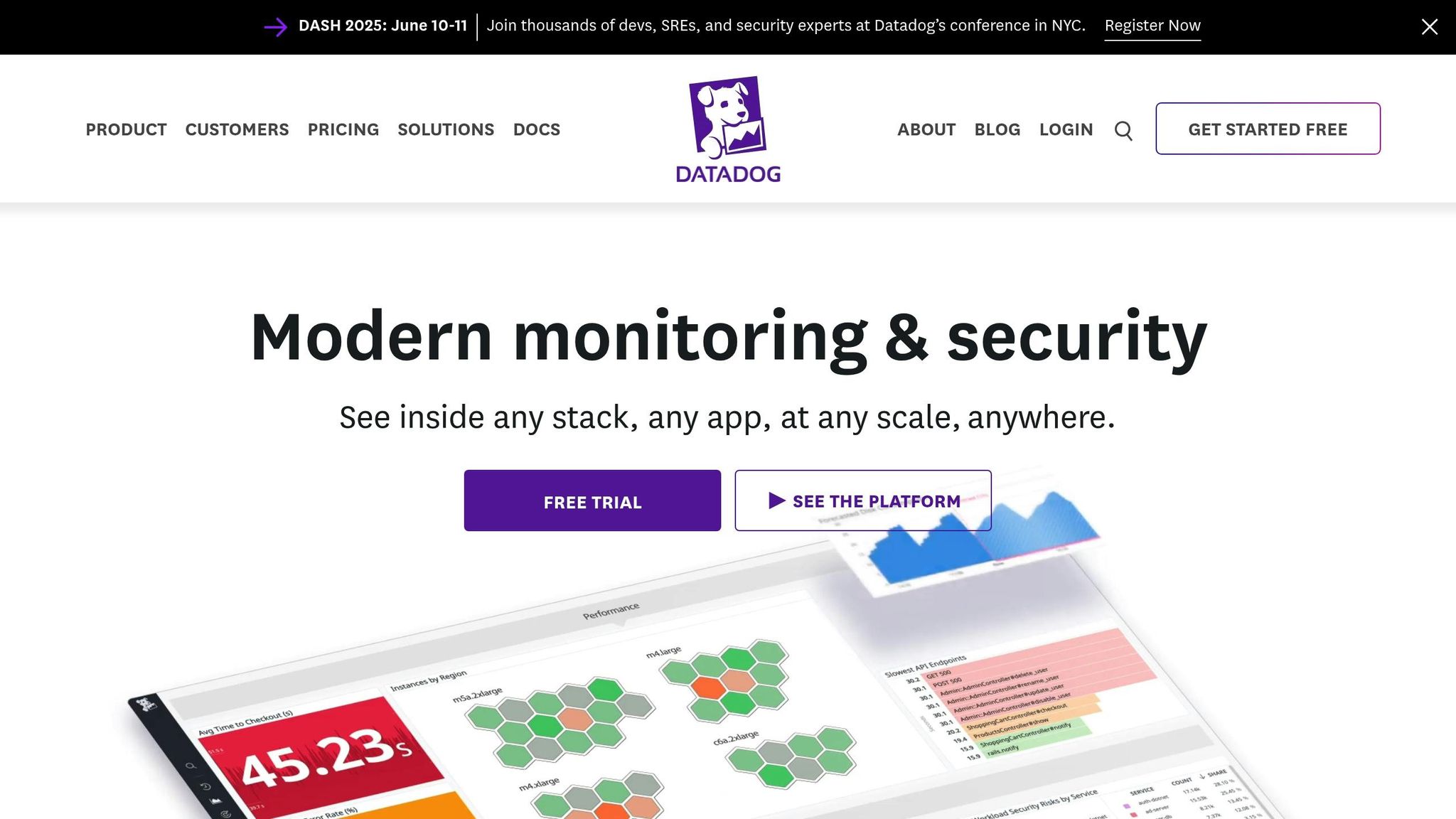
Datadog Agent Configuration File Structure
The Datadog Agent relies on a structured hierarchy of YAML files to manage its monitoring and behavior. Below, we’ll explore the main configuration components, how integrations are set up, and the role of environment variables in customizing setups.
Main datadog.yaml Components
The primary configuration file, datadog.yaml, contains several key sections that control the agent’s core functionality. Here’s a breakdown of its components:
| Component | Purpose | Example Setting |
|---|---|---|
| Core Settings | Basic agent configuration | api_key, site, hostname |
| Collection Settings | Data collection parameters | logs_enabled: true, apm_config.enabled: true |
| Security Settings | Access and authentication | proxy, skip_ssl_validation |
| Performance Settings | Resource usage controls | process_config.process_collection.enabled |
Here’s an example configuration snippet:
api_key: "<YOUR_API_KEY>"
site: "datadoghq.com"
logs_enabled: true
apm_config:
enabled: true
env: "production"
Setting Up Integration Files
Integration-specific configurations are organized in the conf.d directory, with each integration having its own folder. This modular setup makes it easier to manage and update individual integrations. For example, configuring a PostgreSQL integration might look like this:
# conf.d/postgres/conf.yaml
init_config:
instances:
- host: localhost
port: 5432
username: datadog
password: "<PASSWORD>"
This structure keeps configurations tidy and ensures each integration has its own dedicated file.
YAML vs. Environment Variables
Both YAML files and environment variables are available for configuring the Datadog Agent, but they are suited to different needs:
| Configuration Method | Best Used For | Example Use Case |
|---|---|---|
| YAML Files | Static configurations | Base agent settings, integration defaults |
| Environment Variables | Dynamic or sensitive data | API keys, passwords, environment-specific settings |
| Hybrid Approach | Template-based setups | Using %%env_VARIABLE%% in YAML files |
For example, referencing environment variables in YAML files can enhance security and adaptability:
postgres:
password: "%%env_POSTGRES_PASS%%"
api_token: "%%env_API_TOKEN%%"
This hybrid approach allows you to combine the stability of YAML files with the flexibility of environment variables, making it easier to manage sensitive or environment-specific data.
Required YAML Settings for Monitoring
Setting Up API Keys
API keys are essential for authenticating your Datadog Agent. To ensure security, handle them with care.
api_key: "<YOUR_API_KEY>"
app_key: "<YOUR_APPLICATION_KEY>"
site: "datadoghq.com"
Instead of hardcoding these keys, use secrets management tools or environment variables to keep them secure:
api_key: "%%env_DD_API_KEY%%"
app_key: "%%env_DD_APP_KEY%%"
Once your API keys are set up, the next step is enabling log collection to monitor system activity effectively.
Configuring Log Collection
With API keys secured, you can configure log collection to capture critical system events. Start by updating the datadog.yaml file:
logs_enabled: true
logs_config:
processing_rules:
- type: mask_sequences
name: "mask_api_keys"
pattern: "api_key.*"
To collect system logs, here's an example configuration:
logs:
- type: file
path: /var/log/syslog
source: syslog
service: system-logs
tags:
- "env:production"
- "team:infrastructure"
Below is a quick reference table for different log source types and their configurations:
| Log Source Type | Configuration Path | Use Case |
|---|---|---|
| Files | /var/log/* |
Application logs |
| TCP/UDP | port: 10514 |
Network device logs |
| Journald | journalctl |
System service logs |
| Windows | windows_event |
Event logs |
Using Tags Effectively
Tags are crucial for organizing and filtering your data. Here's how to structure them:
tags:
- "env:production"
- "team:backend"
- "service:api"
- "region:us-east-1"
The table below outlines common tag categories and their purposes:
| Tag Category | Example | Purpose |
|---|---|---|
| Environment | env:production |
Deployment context |
| Service | service:payment-api |
Application component |
| Team | team:platform |
Ownership tracking |
| Cost Center | cost:infrastructure |
Budget allocation |
Finally, verify your configuration by running:
sudo datadog-agent status
This command ensures your API keys, log collection setup, and tagging are correctly configured and operational.
Advanced Configuration Methods
Once you've mastered the basics, advanced configuration techniques can help streamline setups, minimize redundancy, and adapt configurations to specific environments.
YAML Anchors and Aliases
YAML anchors are a handy way to create reusable configuration templates. Here's how you can use them effectively:
# Define a base template
base_monitoring: &base
logs_enabled: true
apm_enabled: true
process_config:
enabled: true
# Use the base template in specific services
api_service:
<<: *base # Inherits from the base configuration
tags:
- "service:api"
- "team:backend"
web_service:
<<: *base # Inherits from the base configuration
tags:
- "service:web"
- "team:frontend"
This approach allows you to define shared settings once and apply them across multiple configurations, reducing duplication and simplifying updates.
Multi-Environment Setup
Managing multiple environments? YAML makes it easier to define global settings and customize them for specific environments. Here's an example:
# Global settings
global_settings: &global
api_key: "%%env_DD_API_KEY%%"
site: "datadoghq.com"
# Development environment
development:
<<: *global
tags:
- "env:dev"
- "datacenter:us1.dev"
log_level: debug
# Production environment
production:
<<: *global
tags:
- "env:prod"
- "datacenter:us1.prod"
log_level: info
This structure ensures consistency across environments while allowing for environment-specific adjustments, like log levels or tags.
Configuration Automation
Datadog's Fleet Automation simplifies centralized Agent management, making it easier to deploy and manage configurations at scale.
For example, here's a Fleet Automation policy:
# Fleet Automation policy example
policy:
name: "standard-monitoring"
description: "Base monitoring configuration"
rules:
- name: "enable-logs"
expression: "tags.env == 'production'"
configuration:
logs_enabled: true
logs_config:
processing_rules:
- type: "mask_sequences"
pattern: "password=\\w+"
And here's a deployment template to automate Agent updates and settings:
# Automated deployment template
deployment:
agent_version: "7.42.0"
auto_update: true
check_frequency: 900
collect_ec2_tags: true
tags_by_source:
- source: "aws"
prefix: "aws_"
- source: "docker"
prefix: "container_"
Validating Configurations
Before deploying, always validate your configurations to ensure everything is set up correctly. Use these commands:
sudo datadog-agent configcheck
sudo datadog-agent diagnose
These tools help catch potential issues early, saving you time and effort during deployment.
Fixing Common YAML Issues
YAML errors can disrupt the performance of the Datadog Agent. Below, we'll go over practical ways to address the most common issues.
YAML Syntax Fixes
Indentation errors are one of the trickiest YAML problems to resolve. Here's how you can fix some typical syntax issues:
# Incorrect multi-line script
before_script:
- true
# Incorrectly indented comment
true
# Correct multi-line script using literal scalar
before_script:
- |
true
# Properly indented comment
true
Key Points to Remember:
- Always double-quote strings containing special characters.
- Use the
|literal scalar indicator when preserving line breaks in multi-line scripts. - Keep hyphen usage and indentation consistent throughout your YAML file.
Configuration Testing Tools
Datadog offers built-in tools to validate your configurations before deployment. These tools can help ensure your YAML files are error-free:
# Check the current configuration
sudo datadog-agent configcheck
# View runtime configuration
sudo datadog-agent config
These tools check for:
- Syntax errors
- Integration statuses
- Agent connectivity
Once you've verified the integrity of your configuration, you can move on to resolving any variable conflicts.
Resolving Variable Conflicts
Variable conflicts can arise when different sources manage your settings. Here's how to address them effectively:
# YAML configuration example
api_key: ${DD_API_KEY}
logs_enabled: true
tags:
- "env:production"
- "team:backend"
Steps to Resolve Conflicts:
-
Check active environment variables:
sudo datadog-agent config | grep "api_key" -
Review the configuration hierarchy:
sudo datadog-agent configcheck --verbose -
Document the final configuration:
# Production environment api_key: # Managed via DD_API_KEY environment variable site: "datadoghq.com" env: "production"
To avoid conflicts, maintain a clear hierarchy between environment variables and YAML configurations. Document which settings are managed through environment variables and which ones are defined directly in your YAML file. This clarity will save you from headaches down the line.
Summary and Recommendations
Main Points Review
Effective tagging and well-structured dashboards are key to improving monitoring efficiency. Let’s break down the core principles:
- Resource Optimization: Using Golang-based checks can cut CPU usage by 7% and memory consumption by 10%.
-
Performance Monitoring:
- Incident response times are reduced by 30%
- Troubleshooting duration drops by 50%
- Decision-making processes see a 25% boost
-
Log Management: To enable log collection, set
logs_enabled: trueand configure source-specific files in theconf.ddirectory.
These principles lay the groundwork for managing the Datadog Agent effectively.
Implementation Guide
Configuration Management
- Always update to the latest agent version.
- Use
datadog-agent configcheckto validate configurations. - Maintain clear documentation of your configuration hierarchy.
Performance Optimization
Here’s an example of an optimized Kubernetes State Metrics (KSM) configuration:
kube_state_metrics_core:
dd_kube_cache_sync_timeout_seconds: 300
dd_kubernetes_apiserver_client_timeout: 60
For Kubernetes clusters with more than 1,000 nodes, these timeout settings help avoid performance bottlenecks.
Monitoring Strategy
- Set up real-time alerts based on historical trends.
- Utilize Application Performance Monitoring (APM) for complete request tracing.
- Centralize logs to speed up root cause analysis.
By following these steps, you’ll create a reliable and scalable monitoring system.
As noted in Datadog’s documentation, tags play a crucial role in organizing complex data streams. They allow for quick searches, easy aggregation, and seamless data pivoting, regardless of the role, environment, or location.
FAQs
How can I keep my API keys secure when setting up the Datadog Agent using YAML?
To keep your API keys secure while setting up the Datadog Agent with YAML, here are some key practices to follow:
- Use a secrets management tool to reference your API keys instead of embedding them directly in YAML files. This adds a layer of protection for sensitive data.
- Avoid hardcoding API keys into configuration files. Instead, rely on environment variables or securely inject the keys at runtime using a secrets management solution. This approach helps prevent accidental exposure, especially in shared or version-controlled systems.
- Limit permissions and rotate keys regularly. By restricting access and periodically updating your keys, you reduce the risk of misuse. Additionally, monitor key activity to spot and respond to any unusual behavior promptly.
These steps can help you safeguard your API keys and ensure your Datadog setup remains secure.
What are YAML anchors and aliases in Datadog Agent configurations, and why should I use them?
YAML anchors and aliases are handy shortcuts for streamlining Datadog Agent configurations. With anchors (using the & symbol), you can define a set of parameters once, and with aliases (using the * symbol), you can reuse those parameters throughout the file. This not only keeps your configurations tidy but also simplifies updates.
Let’s say you have identical logging settings across multiple services. Instead of repeating the same settings, you can define them as an anchor. Then, whenever you reference that anchor, any updates you make to it will automatically apply everywhere it’s used. This method is a game-changer for managing complex cloud setups, helping you stay organized and avoid mistakes.
How do environment variables make Datadog Agent configurations more flexible and secure than using static YAML files?
Environment variables offer more flexibility and security when configuring the Datadog Agent compared to static YAML files. With environment variables, you can adjust configurations dynamically without modifying the YAML file itself. This is particularly helpful in setups like containers or cloud deployments, where configurations often need to change. It also reduces the risk of manual errors and makes it easier to manage settings across multiple systems.
On the security side, environment variables keep sensitive information - like API keys or credentials - out of YAML files. This helps prevent exposing sensitive data in version control and aligns with best practices for managing secrets. Using environment variables allows for a safer and more dynamic approach to configuring the Datadog Agent.

